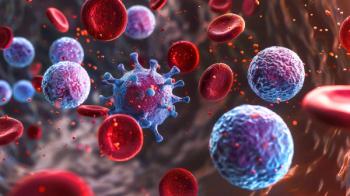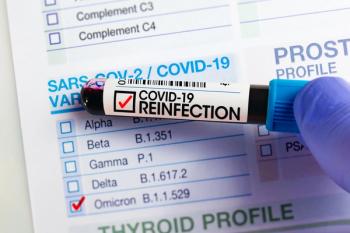
Study Finds High HIV Viral Loads Associated With Higher Recombination Rates, May Influence Viral Evolution
According to the authors, the findings may have broad implications for understanding recombination and viral evolution within various organisms.
According to research published in Molecular Biology and Evolution, HIV populations in people with higher viral loads also have higher rates of viral recombination. In effect, it is easier for the virus to diversify when there are more viral loads of HIV in the blood.
Due to HIV’s high rate of recombination—which allows the exchange of genetic information across strains of the virus and drives the evolution of HIV—it has been difficult to combat the virus. Further, recombination is an evolutionary driver and allows organisms to remove destructive mutations and instead combine helpful ones. According to the authors, understanding the factors that influence recombination rates in HIV can help broadly reveal the potential effects that recombination has on the viral evolution.
Previously, it was unknown how recombination rates differed throughout an infection and between individuals. In addition, the influence of coinfection—when 2 viruses infect the same cell—on HIV is not currently understood, and it is not known whether variation in the rate of coinfection can result in a different variation in recombination rate. Studies of HIV in cell cultures in mice indicate that an increase in coinfection is correlated with an increase in recombinant viruses; however, it is not known if this effect is present in people living with HIV.
The study investigators examined whether people with higher viral loads of HIV in the blood would have more cells that were coinfected and whether that would result in higher rates of recombination for the virus. For their analysis, the Recombination Analysis via Time Series Linkage Decay was used to quantify recombination using genetic correlations between mutations over time.
According to the study results, HIV populations with viral loads in the lowest third data set had recombination rates consistent with prior hypotheses; however, populations with viral loads in the upper third had a median recombination rate that was approximately 6 times higher. The findings indicate that the rates of HIV recombination may be even more significant than previous hypotheses predicted. In addition, the results suggest that population density may impact the effective rate of recombination across multiple settings.
“An explosion of sequencing data over the past few decades has given geneticists a deeper understanding that recombination rates can be context-dependent and are influenced by many different molecular factors,” said study author Elena Romero, department of genome sciences, University of Washington, in a press release. “Here, we show that population density may serve as one of those previously underappreciated factors for viruses.”
Reference
Oxford University Press USA. Higher viral load during HIV infection can shape viral evolution. News release. January 10, 2024. Accessed January 11, 2024.
Newsletter
Stay informed on drug updates, treatment guidelines, and pharmacy practice trends—subscribe to Pharmacy Times for weekly clinical insights.


















































































































































































































